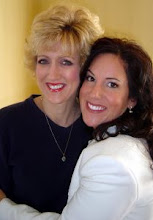
When people talk about where they find beauty and what is beautiful to them, they reveal whom they love and how they love, and what they love to do.
Listening as people recollect and offer their own beauty stories, I am in awe of the ways that beauty moves in our lives. Everyone who has a family, or loves an animal or a place or a piece of music, has a beauty story to tell. A man reflects on the challenge of keeping Eros alive in a long marriage, a woman speaks of what it was like to grow up with a mother who was a model, another comments on learning how to appreciate her own beauty when compared to a classically gorgeous sister.
As we speak about our personal relationship to beauty and what is beautiful to us, we reveal our longings to be seen, our need for acceptance, the powerful influence of mothers and fathers, grandparents, older siblings, first loves and favorite cousins, our keen ability to remember what embarrassed, confused, and delighted us, our yearnings to stand out and to fit in, our desire to be loved. In our own stories we mark the distinction between looking beautiful and feeling beautiful — the part of us trapped by our culture and the part of us that knows our own value.
A nurse declares that her beauty secret is that the husband who adores her is nearsighted, so when she is close enough for him to see her, is seeing her with the eyes of love. A newspaper story describes how a young interracial blind couple got together when she became attracted to voice, reminding us that prejudice is born in dismissing people because look different, because we see them as exotic and frightening.
“Love is blind,” we say, but perhaps it is more accurate to say love sees with different eyes. Love sees beyond the surface. Love opens the door for beauty. When we see with the eye, we develop the ability to refine, to judge, to discriminate. When we see with the heart, we expand the view of what it is to be human, see the common dream, see the wisdom of friends and neighbours, and see there is no separation between that which is most beautiful and the everyday world. The eye of the heart sees with a wholeness that allows imperfections and idiosyncrasies to coexist with beauty. The eye of the heart knows surface and depth are not opposites. Beauty is a process, a revelation, not a finished state.
Beauty reveals itself over time in relationship. The people I love are beautiful to me. I’m not sure if my eyes are blinded by love or it is love that lets me see their beauty. Knowing them over time, my appreciation of who they are and how they appear increases. Their beauty comes from their liveliness and authentic sweetness, their intention to live lives that make some sense (and some nonsense), the spirited coherence of being who they are.
A teacher recalls sitting in on another teacher’s class and thinking, “Isn’t it strange how ordinary looking, how rather plain these kids are? My students are beautiful.” She sees her students as gorgeous because she knows them well. “When you sit with them or work with them and see them every day and know their moods, they become more amazing, not less so,”‘ she says. “And then, I realized that the kids in the other classroom look beautiful to their teacher, too.”
When a beautician notes, “All my clients are beautiful,” I hear how her awareness of and attention to beauty brings it out in others.
When we are most alive, we are beautiful. When we are in love, we are reminded that we are beautiful. And sometimes when we know we are beautiful, we find ourselves in love. “In love” usually means the romantic sense of being with one other person who in that moment we feel reflects us perfectly. In love, living in the field of love. Sometimes I have felt like I was in love, even when there was no one I was in love with. I couldn’t talk about my lover’s hands or eyes or voice. I couldn’t focus all this love on one other, and it was both confusing and revealing to realize how much we become places for each other to rest in. Alone and “in love” it is easy to feel like you’re making it up. Our songs and movies have told us such great sentimental stories about being “in love,” we forget that being in love can be a state of truth as well as an illusion.
Long-time friends witnessing a friend “falling in love” often caution the infatuated person that being in love is a dizzy, temporary state. I think of this territory not just as a delicious romantic dance, but as a field to which we can travel from many places. There is a way in which being in love with anything — a person, a place, a project — is crossing a border into a country where the ego does not rule, being in a state where essence is honoured. We are both inside and outside our everyday selves. It is always interesting to observe what happens when we return to the land of ordinary life. Can we live with more generosity and trust?
I never want to underestimate the capacity that being “in love” has to change our seeing, expand our vision, and remind us of both human beauty and human frailty. The search for the beloved is full of paradoxes. We want to be who we are when we are our best self, and sometimes because we have met that self when we are in love, we believe that self only exists in the presence of the other. So we hold on to the other and lose ourselves, forget that love is partly of this world and partly of some other place.
An old beau spoke of the danger of trying to make our lovers be God, insisting that we each need our own relationship to the Source. It sounded logical, but I rebelled at his analysis. In this world, one of the ways we glimpse God is when we are in love. Not that the beloved is God, but that God is the Beloved, a tradition as old as the Song of Songs and the ecstatic poems of wandering Indian mystics, the Sufis. One of the most beautiful and accessible ways to address God is as Love.

The Greeks gave us an image of Eros, the unpredictable archer before whom even the Gods trembled. Hindus tell their stories of the Gopi maidens seeking Krishna, the bewitchingly beautiful, blue-skinned god; Krishna with his soft glowing eyes, perfumed hair, Krishna drawing women to him, touching each in forgotten registers of being.
What is done with love is done in beauty to celebrate the God that loves. More and more I believe the messengers of love, the envoys and the couriers of beauty are everywhere. And I wonder how something so clear can also be mysterious. The Indian poet Ghalib writes, “This earth, burnished by hearing the Name, is so certain of Love that the sky bends unceasingly down, to greet its own light.”



















































